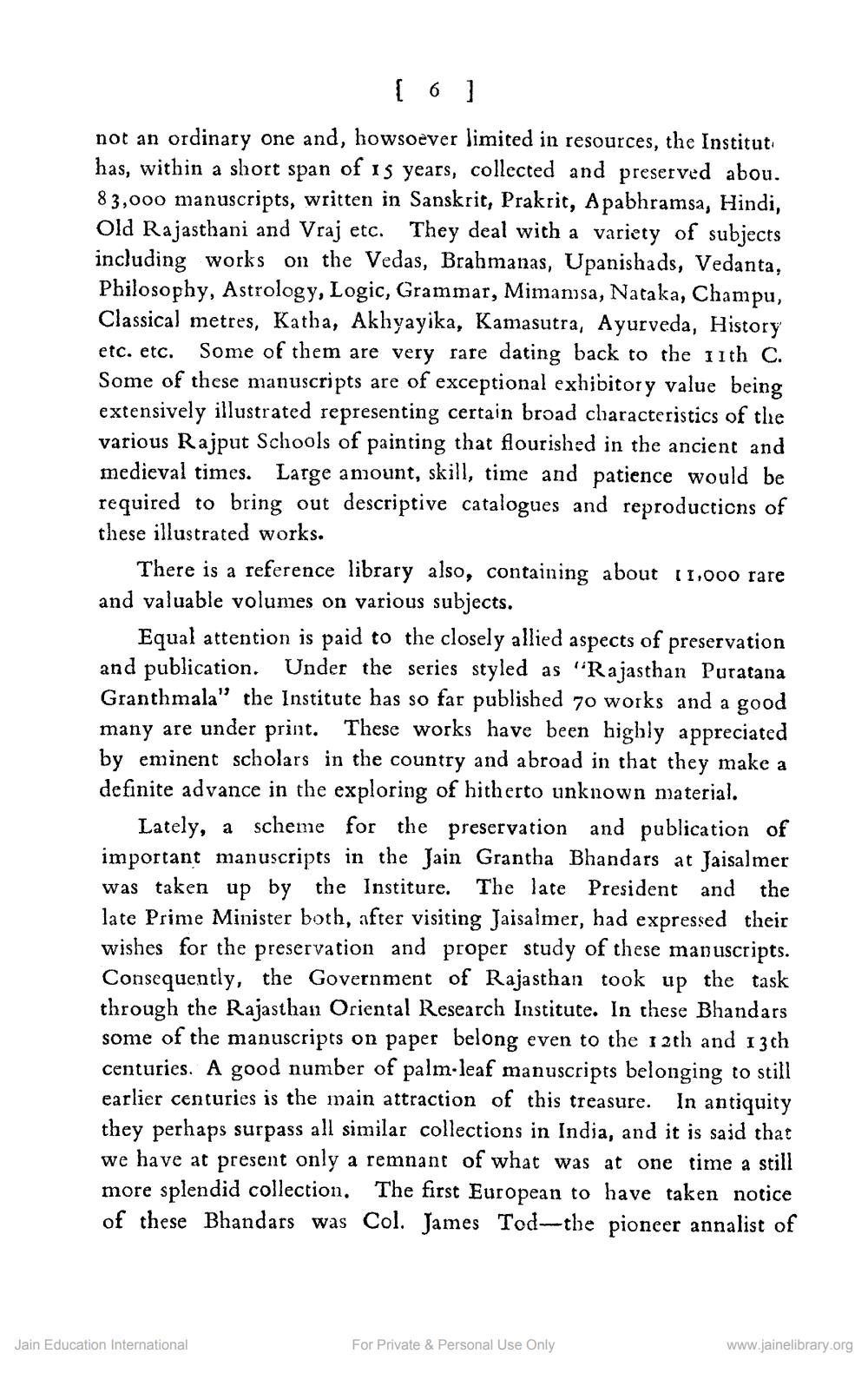________________
not an ordinary one and, howsoever limited in resources, the Institut has, within a short span of 15 years, collected and preserved abou. 83,000 manuscripts, written in Sanskrit, Prakrit, A pabhramsa, Hindi, Old Rajasthani and Vraj etc. They deal with a variety of subjects including works on the Vedas, Brahmanas, Upanishads, Vedanta, Philosophy, Astrology, Logic, Grammar, Mimamsa, Nataka, Champu, Classical metres, Katha, Akhyayika, Kamasutra, Ayurveda, History etc. etc. Some of them are very rare dating back to the 11th C. Some of these manuscripts are of exceptional exhibitory value being extensively illustrated representing certain broad characteristics of the various Rajput Schools of painting that flourished in the ancient and medieval times. Large amount, skill, time and patience would be required to bring out descriptive catalogues and reproductions of these illustrated works.
There is a reference library also, containing about 11.000 rare and valuable volumes on various subjects.
Equal attention is paid to the closely allied aspects of preservation and publication. Under the series styled as "Rajasthan Puratana Granthmala" the Institute has so far published 70 works and a good many are under print. These works have been highly appreciated by eminent scholars in the country and abroad in that they make a definite advance in the exploring of hitherto unknown material.
Lately, a scheme for the preservation and publication of important manuscripts in the Jain Grantha Bhandars at Jaisalmer was taken up by the Institure. The late President and the late Prime Minister both, after visiting Jaisalmer, had expressed their wishes for the preservation and proper study of these manuscripts. Consequently, the Government of Rajasthan took up the task through the Rajasthan Oriental Research Institute. In these Bhandars some of the manuscripts on paper belong even to the 12th and 13ch centuries. A good number of palm-leaf manuscripts belonging to still earlier centuries is the main attraction of this treasure. In antiquity they perhaps surpass all similar collections in India, and it is said that we have at present only a remnant of what was at one time a still more splendid collection. The first European to have taken notice of these Bhandars was Col. James Tod—the pioneer annalist of
Jain Education International
For Private & Personal Use Only
www.jainelibrary.org




